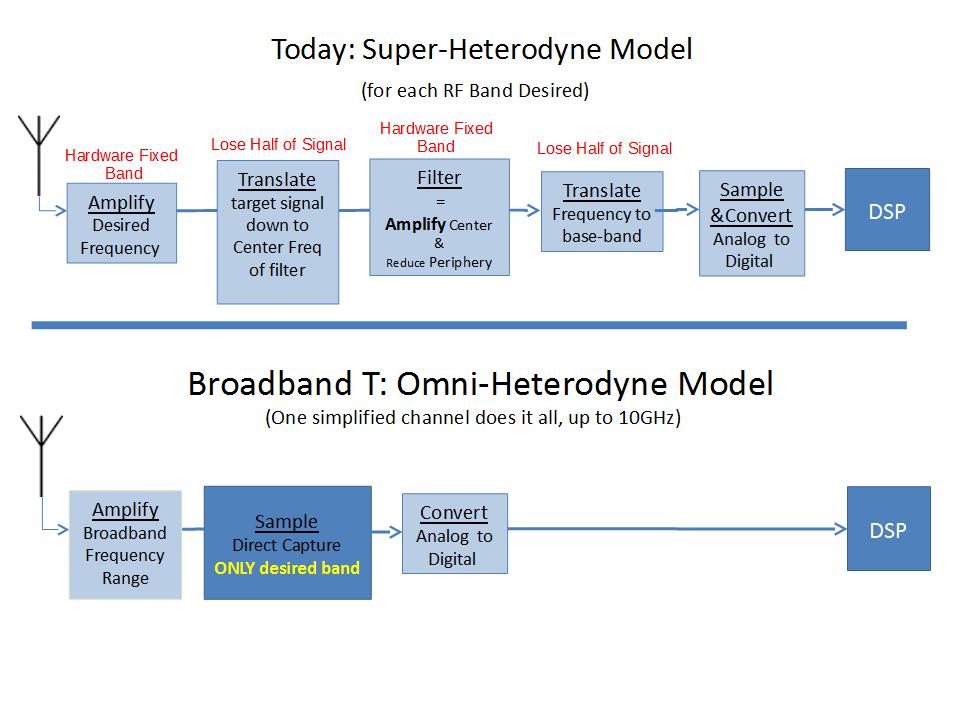Omni-Heterodyne®
The word heterodyne literally means more than one dynamic, or multiple dynamic. Or, as it is most typically applied within the field of electronics and communications, heterodyne means, of multiple different signals. Heterodyning is a process by which two signals are combined to result in a frequency shifted version of the signals, particularly of the signal of interest, or target signal.
Omni-Heterodyne® refers to a newly conceived radio capability and standard, resulting from proprietary flexible signal acquisition and reconstitution techniques, known as RF2D™ and D2RF™ respectively, which can acquire one or many signals from an input band simultaneously, in effect capturing any desired bandwidth of input signals, centered on any desired target signal. The captured band information can then be digitized and digitally processed, prior to and without shifting convoluting or distorting the input signals frequency content in any way. Once digitized, a fully programmable DSP block can combine components extracted from the captured band in any desired (programmable) way, and is thereby capable of demodulating any incoming signal in accordance with any modulation technique possible, to include any technique in use today.

Super-Heterodyne is the most common legacy method used to receive radio signals. Ingenious for its time, (1918), it involved a two step hetero-dyning technique. The first step translated the input band in frequency by a tunable amount, shifting the target signal to align with an intermediate frequency (IF), where all the filtering could take place centered at a single IF frequency, regardless of tuning selection. Frequency translation tends to generate other undesired frequency components or spurs, requiring additional filtering to manage. For flexible range reception systems, all this filtering needs to be adjustable over impossibly wide ranges, with spurs becoming nearly impossible to predict or compensate for. All of this makes traditional Super-Heterodyne and filtering techniques completely impractical for a fully flexible reception system.
Omni-Heterodyne® represents a capability so flexible, that it has just as many degrees of freedom as the transmission medium itself, and is therefore capable of being programmed to receive or transmit any type of signal possible, while executing simple and efficient RF2D™ and D2RF™ conversions in the same way, regardless of the modulation and transmission technique selected.
If there is any signal at or below the highest frequency band capability of a radio or wireless system, which the system cannot receive process and transmit, then that system does NOT have Omni-Heterodyne® capability.
